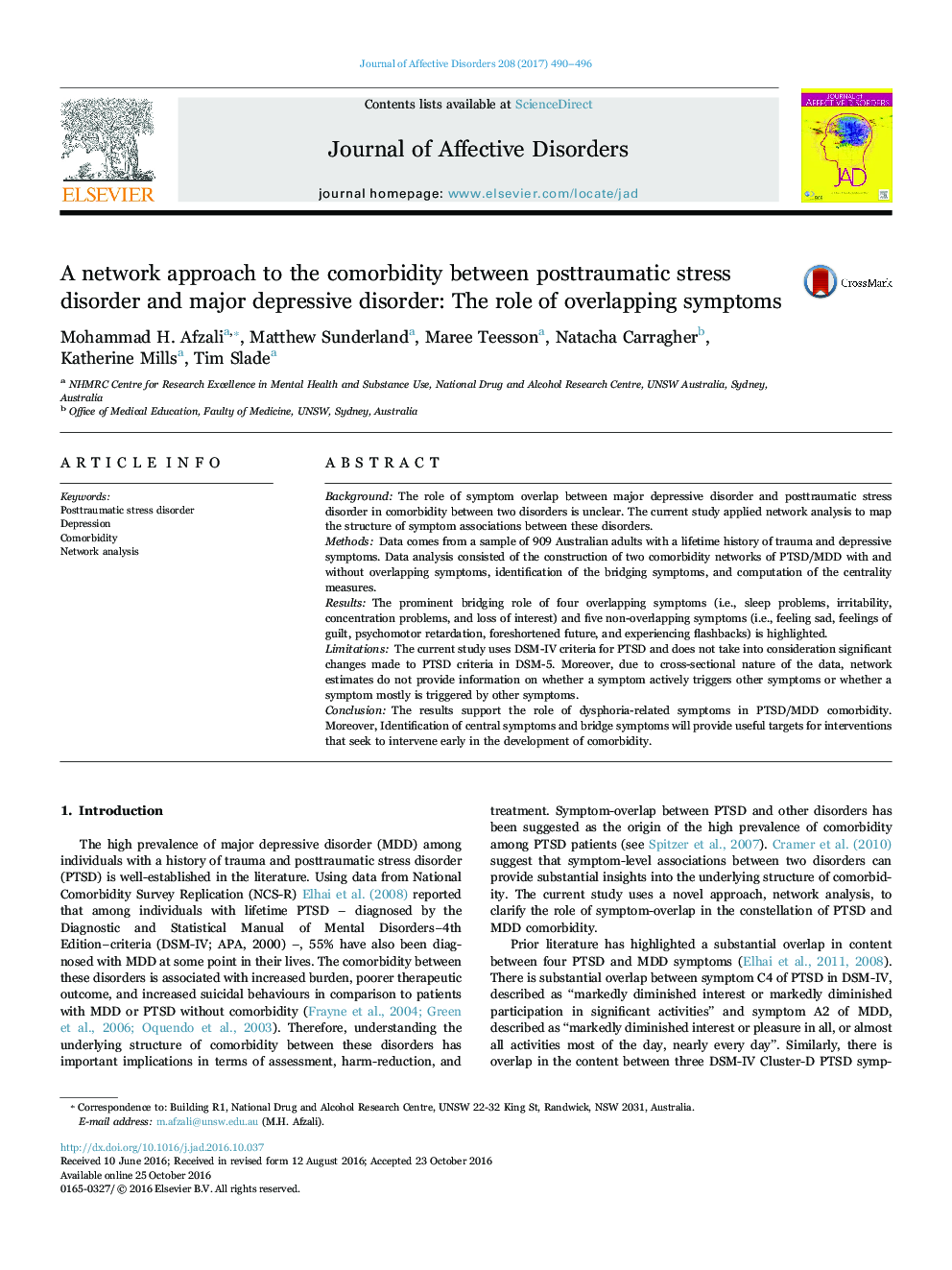| کد مقاله | کد نشریه | سال انتشار | مقاله انگلیسی | نسخه تمام متن |
|---|---|---|---|---|
| 5722118 | 1608117 | 2017 | 7 صفحه PDF | دانلود رایگان |
- Networks of symptoms representing comorbid PTSD and MDD are proposed.
- Associations between both overlapping and non-overlapping symptoms bridge two disorders.
- The results support the role of dysphoria-related symptoms in PTSD/MDD comorbidity.
- The identification of bridge symptoms provides useful targets for novel interventions.
BackgroundThe role of symptom overlap between major depressive disorder and posttraumatic stress disorder in comorbidity between two disorders is unclear. The current study applied network analysis to map the structure of symptom associations between these disorders.MethodsData comes from a sample of 909 Australian adults with a lifetime history of trauma and depressive symptoms. Data analysis consisted of the construction of two comorbidity networks of PTSD/MDD with and without overlapping symptoms, identification of the bridging symptoms, and computation of the centrality measures.ResultsThe prominent bridging role of four overlapping symptoms (i.e., sleep problems, irritability, concentration problems, and loss of interest) and five non-overlapping symptoms (i.e., feeling sad, feelings of guilt, psychomotor retardation, foreshortened future, and experiencing flashbacks) is highlighted.LimitationsThe current study uses DSM-IV criteria for PTSD and does not take into consideration significant changes made to PTSD criteria in DSM-5. Moreover, due to cross-sectional nature of the data, network estimates do not provide information on whether a symptom actively triggers other symptoms or whether a symptom mostly is triggered by other symptoms.ConclusionThe results support the role of dysphoria-related symptoms in PTSD/MDD comorbidity. Moreover, Identification of central symptoms and bridge symptoms will provide useful targets for interventions that seek to intervene early in the development of comorbidity.
Journal: Journal of Affective Disorders - Volume 208, 15 January 2017, Pages 490-496
